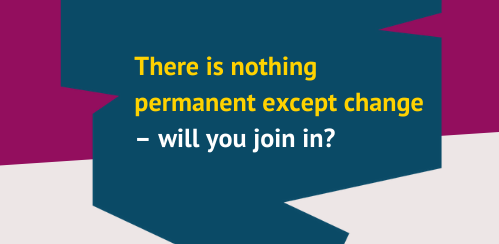While the value of face-to-face interaction to business relationships has never been open to dispute, it has become apparent in…
Tekijät | Authors

New instructions for writers
The aims of Talk online magazine are societal influencing, sharing competence and information, strengthening the expert role, creating discussions and sharing information.
Contents of the articles
Highlight the expert point of view: what new knowledge or new perspective you have on the topic, why the development project is/was important, which practical issues does it solve, what emerges from this development experience. You present ideas about the practical significance, new aspects and areas of application of the results of the development project.
In addition to expert articles, Talk online magazine welcomes lighter items, such as interviews and feature stories about, for instance, the cooperation between universities of applied sciences and international partners or other operators. The perspective in the feature stories is professional, e.g. an alumni or career story, a top expert.
Utilize actual case examples and practical descriptions in a way that makes the reader interested.
The structure of the text is less formal than in scientific articles. In expert articles, the text gets straight to the point.
The role of references is rather small in these texts. Instead, the pieces aim at attracting expert readers in working life. Links, charts, tables and images enliven the text.
Structure of the article
- heading
- headnote
- short body text paragraphs – one idea per paragraph, only 2–3 sentences
- subheadings which attract interest between every couple of paragraphs (remember search engine optimization – with which words can potential readers search for information on your topic) and/or
- interesting pull quotes at suitable intervals
- in lists, prefer the list function (such as this list) – if there are three things in a row, listing them is preferred over direct text
- genuine captured moments fit between the text, embedded videos can also be used
- in the end, include information and a link if the article is related to the work of a research group
- you can also place a summary of the project data and information on the pictures to the end
Types of stories
1. A problem and solution
The aim is to increase the impact of Turku UAS by highlighting the expertise of Turku UAS or our partner, by offering readers concrete benefit and creating discussion. We offer benefit by disclosing the results and the opportunities for utilizing and applying them in different contexts.
2. An expert’s view on change
The aim is to increase the impact of Turku UAS by highlighting the expertise of Turku UAS or our partner, by offering readers concrete benefit and creating discussion.
3. An article on a phenomenon: Turku UAS offers solutions
Journalistic content, e.g. an interview. The aim is to increase Turku UAS’ impact by describing how we participate in solving current problems, and simultaneously share information on said problems.
4. Podcast, video documentary, other video or audio publication
The aim is to increase Turku UAS’ impact by describing how we participate in solving current problems, and simultaneously share information on said problems.
From an idea to readers – in an interactive manner
Please note that if you offer a completed article, the editorial board of the magazine may consider it not to meet the goals of the magazine or engage with its readers. In this case the text will not be published without you making significant changes to it. Publishing an article is an interactive process.
- When you have an idea for an article or a blog post, contact the Communications or Publications Leader of your faculty or the editor of the thematic magazine. You can find the contact information on the page Contact us. Discuss together which thematic magazine of Talk is the most suitable channel for your text.
- Consider together the aim and target groups of your text: who are you writing at and why?
- Decide together, depending on your aim and target group, whether you write in Finnish or English.
- Make sure that your aim and target group suit Talk online magazine and its chosen thematic magazine. The aims and target groups may vary from one thematic magazine to another.
- Decide your viewpoint. Define your topic, the suitable thematic magazine in Talk and the genre.
- Get to know the instructions for the different story types and consider which story type your topic suits best.
- Plan the content outline and structure of the text: which points and in which order.
- If you aim at writing a publication worth of the MINEDU publication points, pay attention to including new, previously unpublished content in your text.
- Detailed instructions on formatting the text are available in the story types’ instructions.
- Start writing. Use clear language that is intelligible for your target group. Don‘t try to write in a sophisticated manner. Instead, aim at being illustrative and interesting.
- Include one idea in one paragraph.
- Use practical examples.
- If you use abbreviations, explain them at least at the first time they appear in your text. Also write in whole words “for example” and corresponding expressions. Avoid abbreviations only used within Turku UAS or faculty names. In front of our stakeholders, we are one Turku University of Applied Sciences.
- Write as much in active voice instead of passive voice: “With the help of service design, both the service users’ and service producers’ voices are introduced.” -> ”Service design introduces…”
- Separate possible quotes in as their own chapters and mark with quotation marks “ “. In this way, the way of marking quotations is the same in texts written in Finnish and English.
- Polish your text with an informative, interesting title. Use subheadings of similar style every few paragraphs.
- The beginning of the title should include a so-called focus keyword, which best summarizes the contents of your article, and which can be entered in the online platform of the Talk website for search engines. The focus keyword can be considered a Google search term, with which you hope your article is found the most. The term should include at least two words. Also consider how someone searching for the issue would type it in Google. The editor of the thematic magazine will assist you in coming up with the focus keyword but try to have a couple of options ready.
- These days, the title of an online text can be long! A catchy title carries an informative and conversational tone; the title can contain several arguments or questions. A good title is concrete and includes details that catch the reader’s attention; quite often, a good title carries emotions or promises benefits for the reader. The title may also contain elements of mystery and drama. The text must always keep what the title has promised! The editorial board can also help with formulating the title and subheadings.
- The purpose of the subheading is to make the reader carry on reading, not sum up the key content of the text.
- Choose a couple of suggestions for pull quotes that attract the attention of glancing. The maximum number of characters in one pull quote is 300, including spaces.
- Read your text through carefully and check the following:
- Have you taken your target group into account in the content, terminology and genre?
- Does your text convey your aim?
- Do you think your text suits the chosen thematic magazine?
- If you aim at writing a publication accredited with publication points from MINEDU, does the text contain new knowledge?
- Have you included enough practical examples of your topic?
- Make the necessary changes.
- Write a short author introduction of yourself in the language of the article (number of characters max. 1500 including spaces in both Finnish and English introductions).
- name, title / degree programme in which you study / research group or the name of the project you represent
- the role in which you wrote the text: whether the text is part of or connected to a thesis, project, research group etc.
- a short description of yourself in the professional or academic field.
- Draft a list of suitable links to be added at the end of the text. Preferably include links to the contents of the websites of Talk magazine or tuas.fi, related to the topic, e.g. in which degree programme can the topic in question be studied. Remember to mention if the article is a part of the work of a research group. This information is collected in the publication database.
- Find image material related to the topic, with adequate resolution. Check the user rights of the images.
- When you think your text is ready, the editor of the thematic magazine asks you to do or does the required editing and returns the text to you for approval.The completed text and images are moved to be submitted in the Talk platform, and a suitable publication date is found in the publishing calendar.
- You will be notified when your text has been published. How does the text reach its readers? Share the link to your text to suitable target groups in different channels to get people talk about your topic. Follow the discussions and participate actively.
Enjoy the writing!
Citing sources and reference practices
The list of references is always available at the end of the text. Only include the sources you have referred to in the article. In terms of an article based on a thesis, a link to the thesis in Theseus is added to the end. In lighter article types, a list of references is not required, i.e. it is not compulsory.
The reference list contains the author, year of publication, title of publication and/or article, and the name and place of the publisher. In the text, refer to sources in the following way: (Name of author, year, page number).
With regard to online sources, provide the title of the material (if the source is equivalent with printed material, refer to it according to above example), the address of the website and the date on which you have retrieved the information on the website. In the text, use links to lead to source websites.
Referring to an article published in Talk: Last name, X. (201x). Article Headline. Talk online magazine, Name of thematic magazine. Retrieved x.x.201x from xxx.








